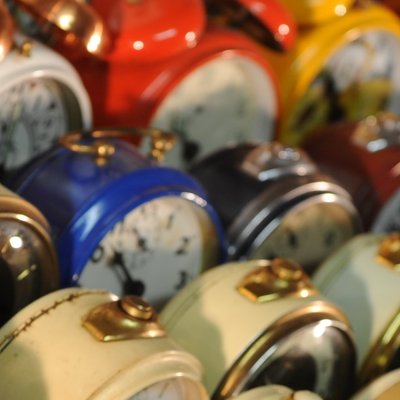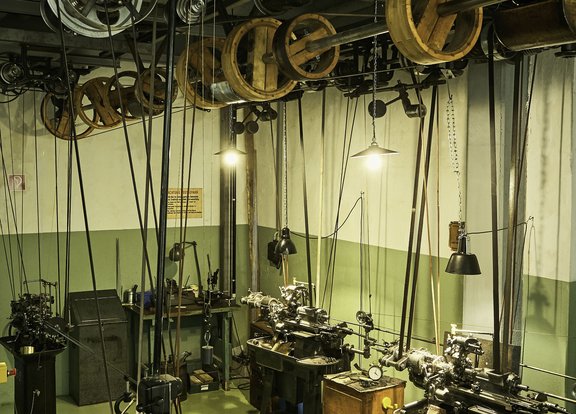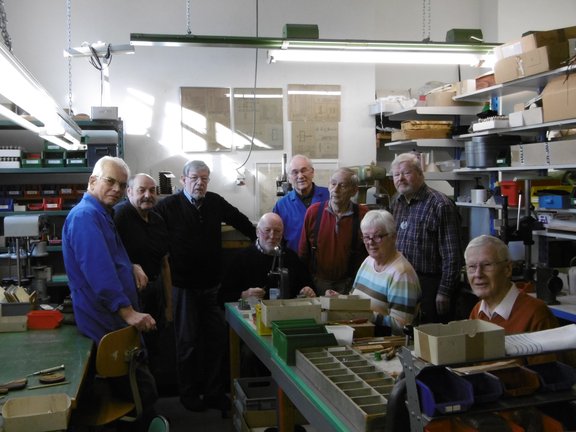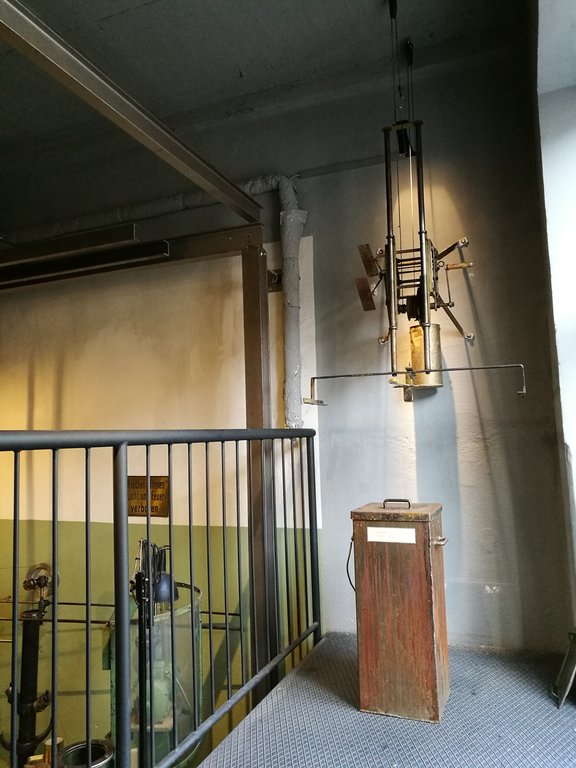
Living Museum
This is the background noise in the world of industrial culture. This is where the parts of the Schwenningen museum alarm clock are made.
Since 1994, a simple mechanical double-bell alarm clock has been produced here as the last production facility in Europe.
Experienced guides will lead you through our lively historical machine hall. The demonstrations are included in the admission price.
Museum workshop
For 130 years, the clock industry shaped life and work in Schwenningen and the entire region. It is therefore of central importance in terms of economic and cultural history.
This is why a group of technology enthusiasts and history-minded citizens got together in 1989 to establish the Clock and Watch Industry Museum. The Förderkreis lebendiges Uhrenindustriemuseum e.V. made the opening possible in 1994 with tireless efforts.
Today, voluntary helpers of the Förderkreis produce a museum alarm clock on historical machines. Volunteers are always welcome to help with this.
Special exhibit in the historic machine hall
The team of the Museum of Industrial Clock Making is very pleased to be able to present a rare object in its permanent exhibition that can also be demonstrated: A dip-coater from around 1960. It complements the museums machinery in the field of electroplating and surface finishing. Until 2020, it was still in use at the Hattler & Sohn company in Schwenningen and was last used to evenly coat gong bars for large clocks.
Thanks to the generous donation by Hattler & Sohn, the object can be shown at the Clock Industry Museum. The gear train of the apparatus refers to tower clock making and is driven purely mechanically by hand crank and weight. This was important because in the paint shop the formation of sparks, e.g. from electric motors, had to be avoided due to the acute danger of explosion.
It is possible that the bizarre machine is a product of the Nuremberg manufacturer Lorenz Förster, who, in addition to tower clocks, also produced such dip-coating apparatuses. For decades, the machine was used at Hattler & Sohn to varnish all kinds of clock parts. That is why it fits perfectly into the collection of the Clock Industry Museum.


